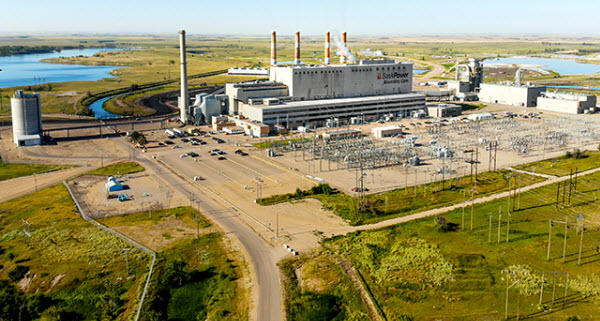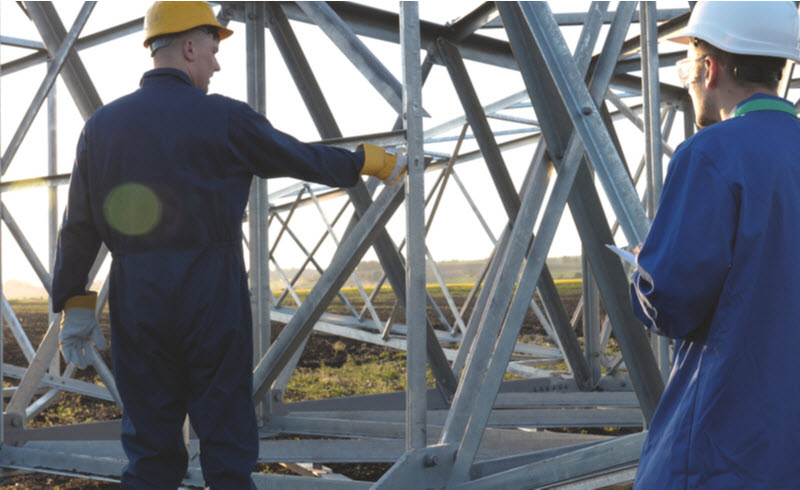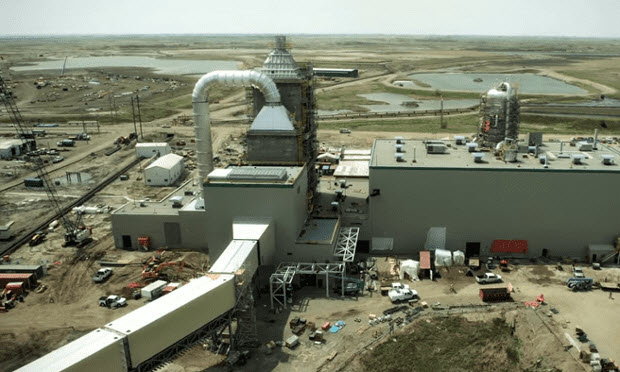
The CCS Boundary Dam project is the world’s first purpose-built carbon capture and storage facility. Operated by SaskPower, the coal-fired power station in Saskatchewan, Canada, is a working and proven facility showcasing the immense potential and contribution that CCS technology can and is making in the CO2 reduction space.
As a fully integrated CCS demonstration project, the facility is a deep saline CO2 capture, transport and storage model operating on a commercial scale.

A bit of historical data
The Aquistore project was first investigated in March 2012. The seismic data proved positive and after two months of drilling, the injection well was completed in September that same year.
This is a significant data point. The process from identification to survey, to investigation and to the well’s completion was undertaken in less than 12 months.
A second monitoring well was drilled to a depth of 3.4km and was completed in January 2013. The two wells are the deepest drilled in Saskatchewan. Logging, sampling and testing of the wells confirmed the site was highly desirable across the necessary parameters, including capacity, injectivity and containment, as an effective geological storage site for captured CO2.

Technical overview
The injection well casing is perforated at between 3,173m and 3,356m depth to allow injection into the Deadwood and Winnipeg formations. The injection well is connected to the Boundary Dam capture unit by a 2km length pipeline. The well locations are ideal formations, created with a very deep saline geologic package known as a flow unit. These geological formations are found on every continent around the world, including Australia.
The rock composition within these natural occurrences is excellent for CO2 storage.
They are porous and permeable and exist in huge volumes. They have effective barriers and geological seals that effectively retain the brines and CO2.
These formations are defined as aquifers because they contain water; however, the water is not drinkable and cannot be used in any agricultural environment. The water in these aquifers is approximately four to five times heavier in salt content than ocean water. Across North America, as an example, these formations are plentiful and have no other economic use other than as storage units for greenhouse gases.

Outcomes that qualify CCS technology
The Boundary Dam project is an integrated facility. The majority of the captured CO2 will be repurposed for enhanced oil recovery (EOR), bringing economic value to CCS as a desired technology.
It is the Aquistore component that provides the alternative to EOR creating a buffer of protection that mitigates delays or interruptions that may be encountered.
Additionally, the Aquistore enables SaskPower to commission their plant earlier and satisfactorily test efficiencies and flow rates. The storage component is highly desirable when routine pipeline maintenance is undertaken and venting needs to occur.
The outcomes and analysis of the Boundary Dam CCS Demonstration Project will inform SaskPower on the integration of their other coal-fired facilities employing carbon capture and storage technology. This move creates confidence in deep saline formations as a viable and safe long-term solution to future CO2 storage applications.
A few quick-fire facts
CCS technology enabled a coal-fired power unit to generate a reliable, long-term supply of 120MW baseload electricity. The CCS is capable of reducing greenhouse gas emissions by one million tonnes of CO2 emissions per year.
SaskPower’s Boundary Dam Unit #3 is producing affordable coal power to over 100,000 homes and businesses and is 10 times cleaner than other coal-fired power plants.

Collaboration is gaining momentum
The project has gained considerable momentum and interest in Canada as the country aggressively moves to reduce greenhouse gas emissions.
Carbon capture and storage technology has signalled its potential through this project and the technology will contribute to Canada meeting its lofty goals.
As the research and development continue, the scope and depth of Aquistore research grows.
Several partners have expressed interest and joined in the research. The portfolio is impressive:
- Deep Earth Energy Production (DEEP)
- Geological Survey of Canada (GSC)
- Natural Resources Canada (NRCan)
- St. Francis Xavier University
Aquistore’s ambition to provide the blueprint for a cutting edge project through knowledge sharing has gained international research collaborations:
- Carbon Capture Project 3 (CCP3)
- CCP is a leading CCS partner of major energy companies such as BP, Chevron, Petrobras, Shell, Eni, and Suncor Energy.
- Chevron
- Chugai Teknos
- Energy & Environmental Research Centre (EERC)
- GeoForschungsZentrum (GFZ)
- Lawrence Berkley National Labs (LBNL)
The Aquistore project is estimated to store in excess of 14 million tonnes of CO2 that would otherwise enter the atmosphere with no chance of being recovered.
This project has signalled to the world that CCS technology can capture and store 90% of greenhouses gases emitted from coal-fired power plants without loss of reliable baseload electricity. Existing coal-fired facilities can reduce their carbon footprint significantly by employing carbon capture and storage.
CCS Energy is committed to forging your path toward net zero emissions. Our expertise can help clients set realistic targets and tap into additional asset value through carbon offset mechanisms available through various global emission trading schemes. Our people are CSS experts and well engineers, passionate about identifying efficient and cost-effective transition technology to capture and store carbon, and reduce your operation’s carbon footprint.
With years of technical experience in the petroleum industry, we can provide all aspects of technical design, project management and regulatory administration.
When your business is ready to do its part in reducing its carbon emissions footprint, give our team a call. We only offer the very best solutions and technical expertise.



